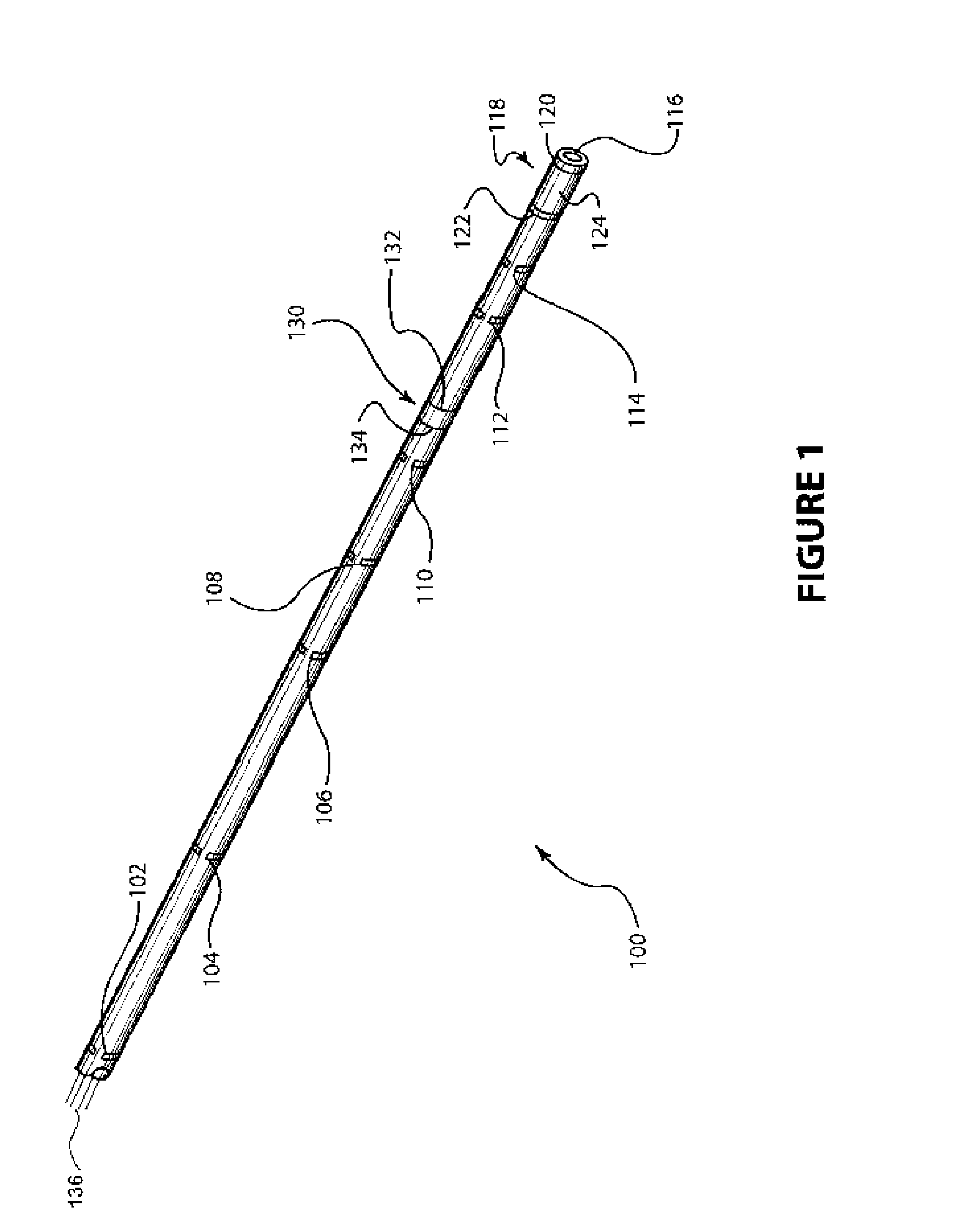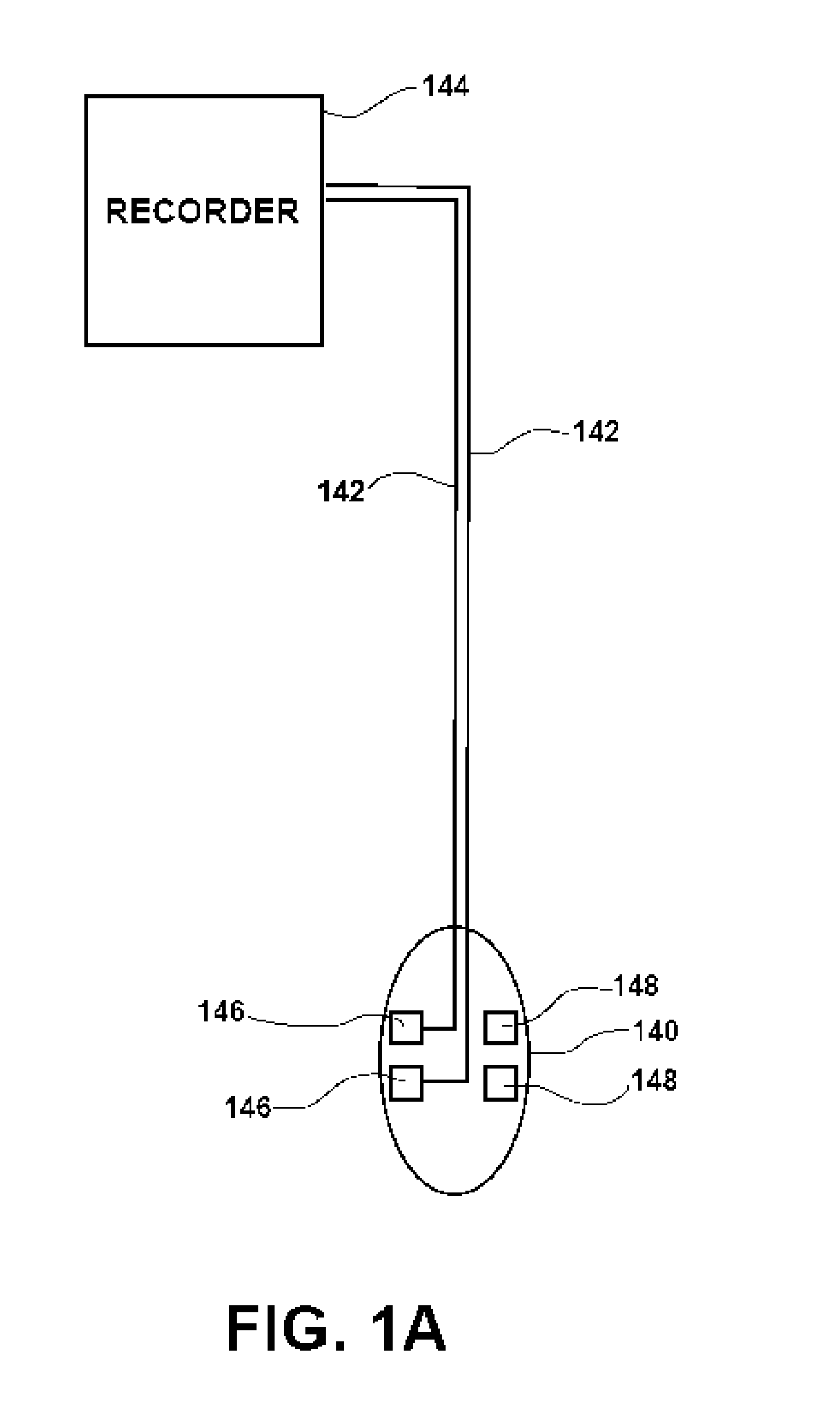Esophageal diagnostic sensor
a technology of esophageal and esophageal nerves, applied in the field of sensors, to achieve the effect of reducing the size of the sensor and reducing the siz
- Summary
- Abstract
- Description
- Claims
- Application Information
AI Technical Summary
Benefits of technology
Problems solved by technology
Method used
Image
Examples
examples
[0042] Eight different impedance channels were monitored from the circumferential impedance sensors 102-114 and the longitudinal impedance sensor 130. The electrodes of sensors 102-114 were driven by an oscillator (Exar, XR-8038, Fremont, Calif.). The resulting current flow was regulated by a potentiometer. The voltage drop between the electrodes of the circumferential impedance sensors 102-114, which is proportional to the electrode impedance, was monitored using a data acquisition system (National Instruments, DAQCard-AI-16XE-50, Austin, Tex.). Hydrochloric acid (0.5 N) was mixed with neutral distilled water in order to test the response of the proposed design to various pH values. The sensing electrodes were submerged in solutions of different pH. Four different pH samples were prepared: 1.4, 2.1, 3.0 and 7.0 using pH / temperature meter (Corning Model 308, Corning Inc., Woburn, Mass.). After each reading the electrodes were cleaned and dried. Two sets of 30 independent measurement...
PUM
 Login to View More
Login to View More Abstract
Description
Claims
Application Information
 Login to View More
Login to View More - R&D
- Intellectual Property
- Life Sciences
- Materials
- Tech Scout
- Unparalleled Data Quality
- Higher Quality Content
- 60% Fewer Hallucinations
Browse by: Latest US Patents, China's latest patents, Technical Efficacy Thesaurus, Application Domain, Technology Topic, Popular Technical Reports.
© 2025 PatSnap. All rights reserved.Legal|Privacy policy|Modern Slavery Act Transparency Statement|Sitemap|About US| Contact US: help@patsnap.com



